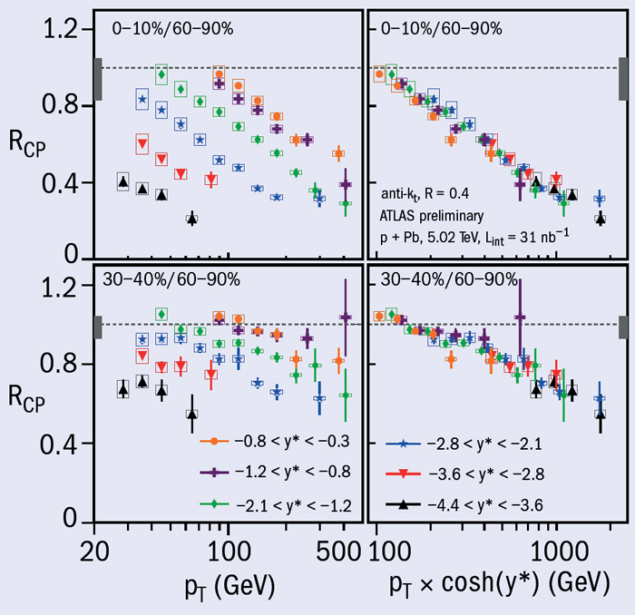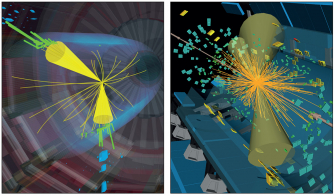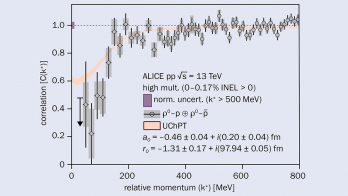Studies of the centrality-dependence of jet production in proton–lead collisions in ATLAS at the LHC are yielding surprising results.
In both proton–ion and ion–ion collisions, many interesting phenomena are influenced by the initial geometry of the collision system. In proton–nucleus collisions, protons that strike the centre of the nucleus (central collisions) see a thicker nuclear target than those that strike the edge (peripheral collisions) and are more likely to undergo a hard scattering. Traditionally, the geometry of the collisions or “centrality” is characterized by a measure of the event activity. For this measurement in ATLAS, the centrality is defined by the total transverse energy in the forward calorimeter in the direction of the lead beam. A model that describes the expected geometric enhancement of hard-scattering rates is used to relate this experimental measure to a factor TA (Miller et al. 2007).

The quantity RCP is defined as the ratio of the per-event jet yields in different centrality bins divided by the ratio of corresponding TA factors, which account for the expected geometric enhancement. The left panels of the figure show RCP values as a function of the jet transverse-momentum, pT, for different ranges in jet rapidity, y*, in the centre-of-mass frame. Negative y* indicates the proton-going direction. The normalized jet ratio, RCP, is suppressed at high pT and large negative y* compared with the expectation from known nuclear effects, which would correspond to a value near unity in RCP. The suppression of jets is strongest in the most central collisions (0–10%) at the highest pT values. Additional studies, independent of the centrality definition, indicate that final-state energy-loss like that observed in ion–ion collisions (jet quenching) is unlikely to be the main source of the effect.
These results suggest either a correlation between hard-jet production and soft-particle production that breaks the traditional geometric paradigm, or that in proton–lead collisions the energy in the forward calorimeter is not a good measure of the centrality of the collision in events with jets.
The right panel of the figure shows the jet RCP as a function of pTcosh(y*), which corresponds closely to the jet’s energy. When recast in terms of this quantity, the RCP values from different y* intervals all fall along the same line. Whether this is coincidence or related to the underlying dynamics is not yet known.
These observations are among the most striking preliminary ATLAS results from the 2013 proton–lead run of the LHC. Further measurements are needed to uncover the mechanism underlying the observed soft–hard correlations.
Further reading
ATLAS collaboration 2013 ATLAS-CONF-2013-105.
M L Miller et al. 2007 Ann. Rev. Nucl. Part. Sci. 57 205.







